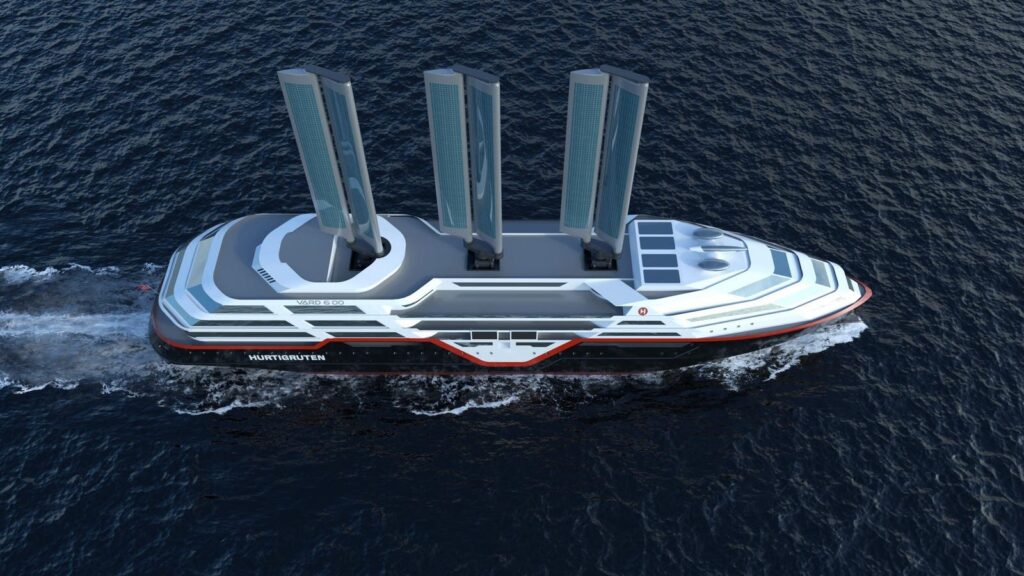
Shipping Goes Back to the Future – With Sails
In a surprising turn of events, shipbuilders have decided to revive an old technology – sails. It appears that the maritime industry is looking to the past for inspiration in order to combat its carbon footprint.
Hurtigruten, a polar exploration company, has announced plans to construct a cruise ship with retractable wind-powered wings, which will be capable of carrying up to 500 passengers. The vessel is expected to sail along Norway’s coast and potentially even circumnavigate the globe.
The move towards incorporating sails into modern shipping vessels comes as the International Maritime Organisation (IMO) has set a target to reduce carbon emissions from the industry by at least 40% by 2030. This reduction in emissions will be achieved through a combination of increasing the use of zero or near-zero emission technologies and implementing more energy-efficient designs.
BAR Technologies, a company that specialises in providing innovative solutions for the maritime industry, has already demonstrated the effectiveness of wind-powered vessels. They recently installed WindWings, large wing sails measuring up to 37.5 meters in height, on the deck of the Pyxis Ocean. The ship, which is owned by Japanese automaker Mitsubishi, was able to achieve significant fuel savings during its maiden voyage.
In fact, the ship managed to save a staggering 11 tonnes of fuel per day when operating under optimal sailing conditions. This represents a substantial reduction in emissions and could potentially have a major impact on the industry’s overall carbon footprint.
It’s not just tourism vessels that are looking to incorporate wind power into their operations – commercial shipping companies are also exploring the potential benefits of wind-powered propulsion. Cargill, a leading global company involved in agriculture, energy, and industrial production, has partnered with BAR Technologies to fit WindWings on one of its cargo ships.
The IMO’s strategy for reducing emissions also includes the implementation of more efficient designs, such as more hydrodynamic hulls, special coatings to reduce friction from the water, air lubrication systems that create a layer of bubbles to reduce drag and fuel use, and even fully-electric propulsion vessels. However, it seems that wind power is seen as an essential component in reaching the organisation’s ambitious emissions reduction target.
Maersk, a Danish shipping company, has already taken significant steps towards reducing its carbon footprint. It has been operating one of its container ships entirely on green methanol since 2023 and plans to introduce eight more vessels powered by this alternative energy source over the coming years. The company also intends to order 20 dual-fuel vessels equipped with methanol and liquified gas propulsion systems, which are expected to arrive between 2028 and 2030.
The extent of Maersk’s commitment to reducing emissions is evident in their decision to order more ships that run on a combination of fossil fuels and alternative energy sources. The shipping giant believes that lower-emission methanol can reduce greenhouse gas emissions by at least 65% compared to conventional fossil fuels, as long as the production process of the methanol meets certain criteria.
It seems that the maritime industry is determined to do its part in reducing its carbon footprint.
Source: www.forbes.com


